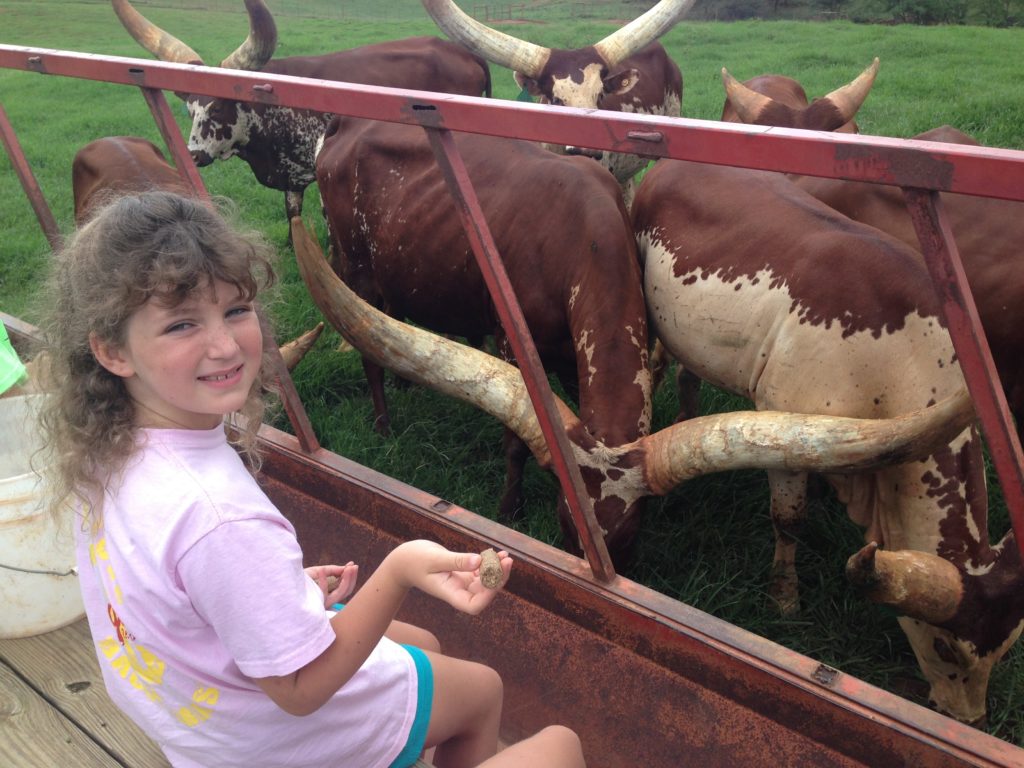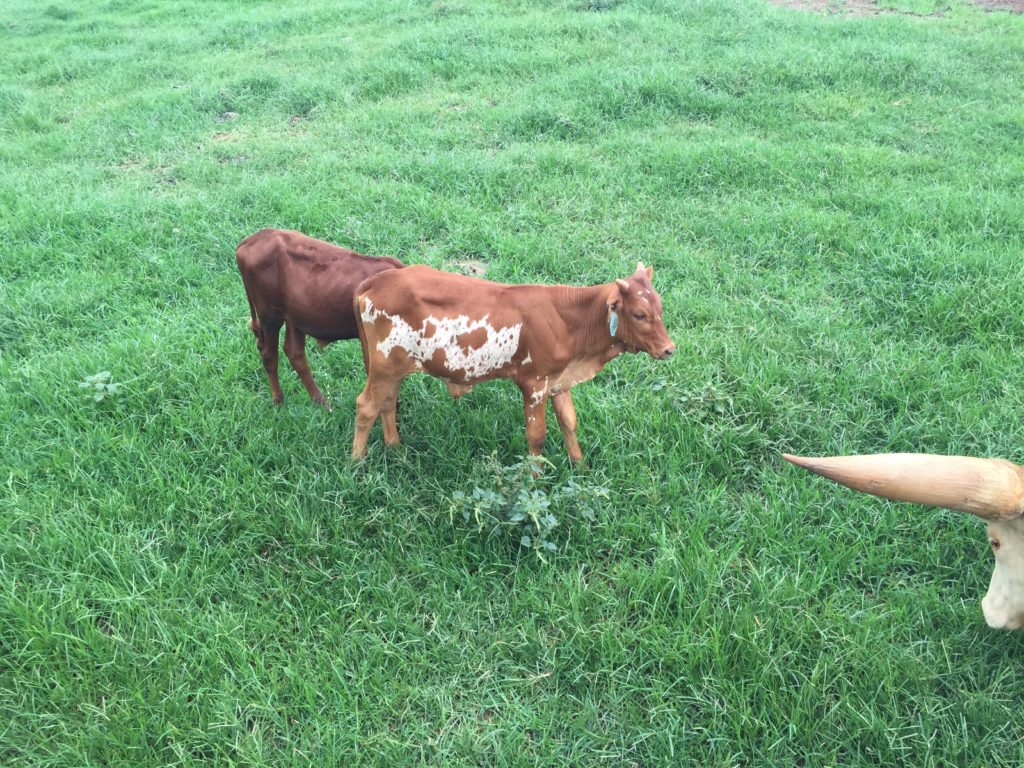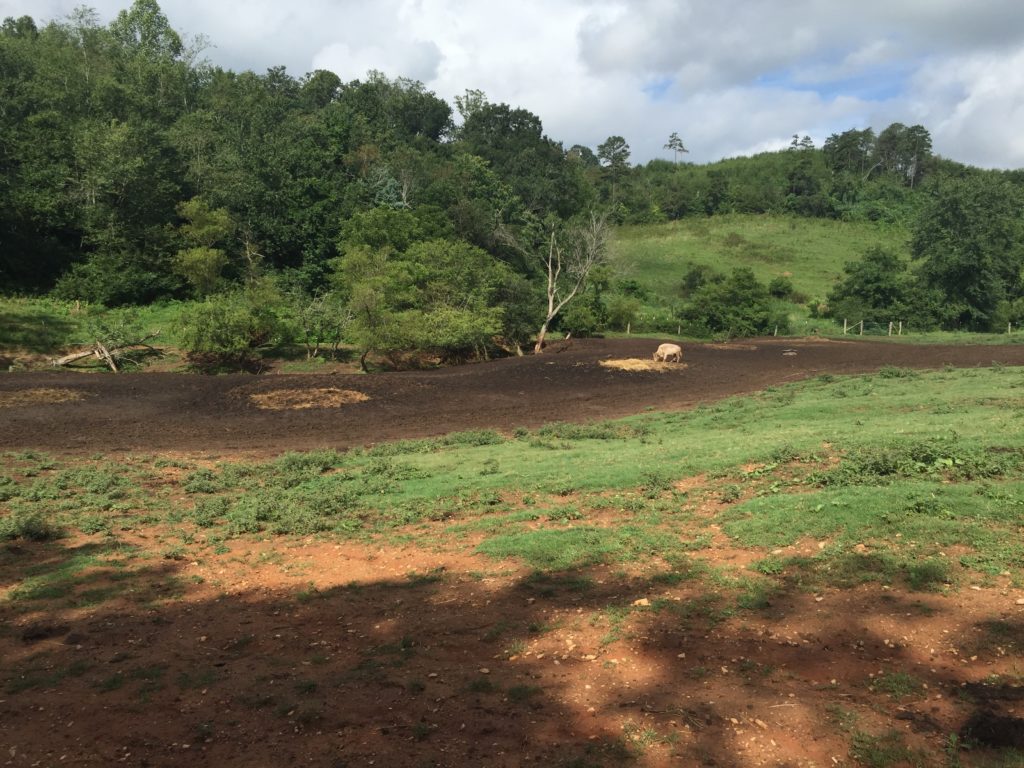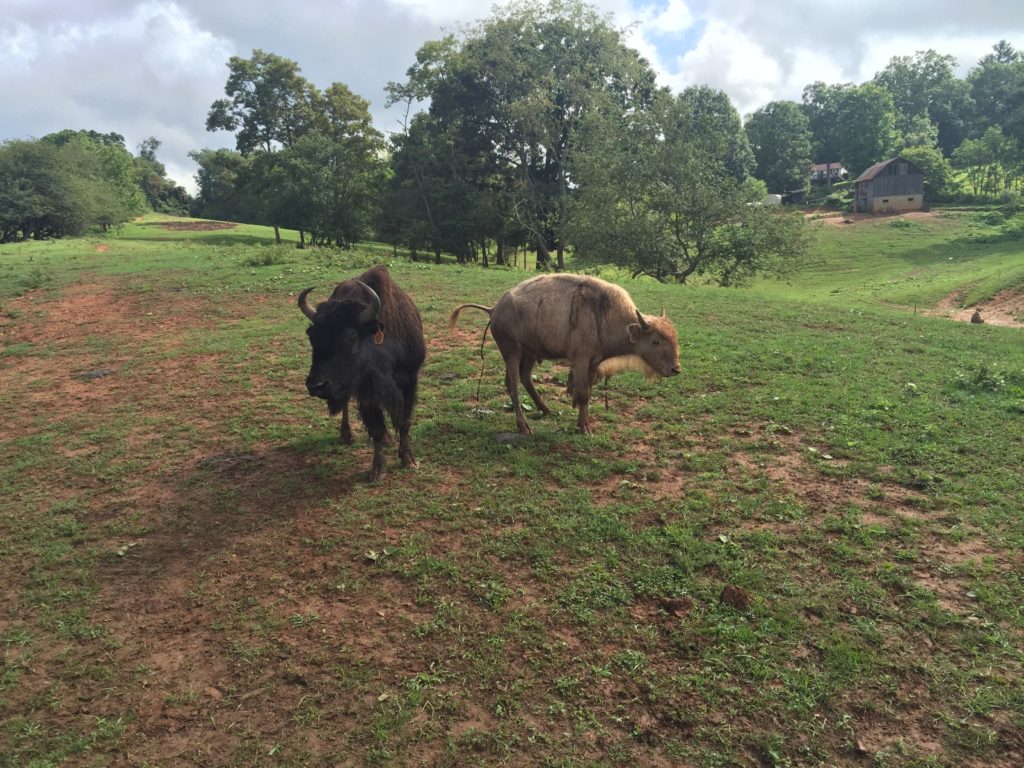
I’m somewhat familiar with the watusi breed. Some of the cattle folks I follow have interbred them with more traditional breeds in Florida trying to breed in some of the Watusi’s heat tolerance. The watusi comes from Africa and had made a living out of thriving on less than ideal conditions. Sparse vegetation, extreme heat, extreme predator pressures. The massive horns are actually hollow and their blood circulates through the horn acting as a type of radiator to help dissipate heat. Seeing cows with horns as wide as some of our cows are long was pretty neat. Also, the pasture the watusi were currently in had a much better stand of grass. 5-6″ of height and probably 80% ground coverage.

As cute as the watusi were, I have to get back to the soil erosion.

They were feeding hay to their animals in August. There are a few reasons to feed hay this time of year. One, the grass is too rich and is giving the animals scours (diarrhea). And indeed, I did see evidence of scours.

Yes this is a picture only a cattleman would take. Every poop I saw from a buffalo looked liquid like they had scours. Maybe that’s the way buffalo are, or maybe they had too rich of a diet. Feeding hay is one way to solidify the poop so maybe it was medicinal. However, coupled with the lack of grass, lack of ground cover, signs of years of significant erosion, and no real mitigation efforts I saw underway, I was guessing overstocking was the problem and feeding hay during the growing season was a band-aid.
So I asked how many watusi cattle they had. 250 head was the response. I looked online, and from an older blog post I found that they had 600 bison on the farm as well, at least at that time.
But more about overstocking, and more cute pics, in the next post.